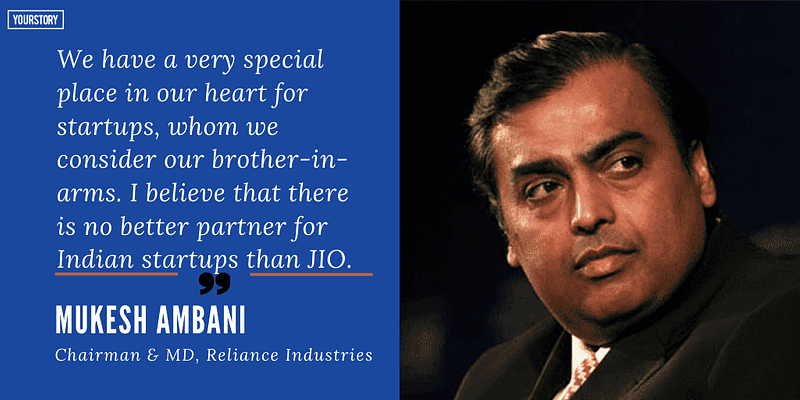Delhi based Fashion Entrepreneur Gaurav Jai Gupta, Akaaro, Hand Woven Textile Design Studio
Sunday June 05, 2011 , 8 min Read

In conversation with Gaurav Jai Gupta, the creator of Akaaro, Abhilasha Dafria for YourStory.in finds out how he designed his dreams to architect the first Indian fashion and textiles studio to exhibit at The Great Contemporary Northern Craft Fair.
Gaurav was one of the finalists at The British Council’s Young Creative Entrepreneur Awards in the Fashion Category in 2009. To know more about the Young Fashion Entrepreneur Awards, visit this page http://www.britishcouncil.org/india-arts-iyfey-fashion.htm - To follow the Young Creative Entrepreneur Awards on Facebook, check out http://www.facebook.com/YCEAwards
Let us begin this interview by getting to know a little about you and your start-up Akaaro.
I was born in Rohtak which is 70 km North West of Delhi and moved to Delhi to study at NIFT. After graduation, I worked as a consultant for couple of months before enrolling at Chelsea College of Art and Design London in Woven Textiles. While at Chelsea, I also went to Atelier Nationle Art Texiles in Paris for an exchange programme. I moved back to India immediately after graduating from London in October 2005. I freelanced and taught for a while and got commissioned from the prestigious Central Saint Martins School of Art and Design to do trend forecast from India for a British magazine Preview from India. In October 2007, I debuted at the coveted and critically acclaimed craft show Origin: The London Craft fair under my studio Akaaro.
We are regular now at Origin, we also became the first Indian studio to exhibit at The Great Contemporary Northern Craft Fair in Manchester in 2009. Akaaro is a highly individual woven textile design studio. Akaaro is a studio and workshop space in Delhi, it works as a front end where we design and prototype our seasonal collections, and a strong skilled master weaver workforce in various parts of the country works as a back end where we do larger pieces and batch production of edited designs.
How did the thought of bringing Akaaro to existence occur to you?

My training at Chelsea introduced me to the nuances of Studio Weaving and exposed me to a whole new dimension vis a vis contemporary hand-woven textiles. Textiles in India are very region specific and the concept of studio weaving is minimal. Thus setting up the Studio was a natural progression after college and I wanted to start something which can fill in the gaps and is progressive at the same time.What were the challenges you faced while starting up Akaaro, and how did you overcome with them?
After coming back from London, I struggled to find a platform for myself to reach out in India’s exclusive environment which triggered me to start on my own. While doing my degree in London I was still working as a consultant for companies back home. My experience with trade shows in Paris, London and other places gave me the much needed direction I required after graduation. My first job was commissioned by the prestigious Central Saint Martins London as a trend forecaster from Delhi and then as a consultant to a British Fashion labels Rockmay. Alongside, I set up my virtual design studio Akaaro while teaching at various fashion schools. With a very clear intention of developing Akaaro as a design studio with panache for contemporary woven textiles and not mixing it with stereo-typical craft oriented existing brands, I started out designing and developing my work which was outsourced from villages. My first break came as I got selected for Origin: The London Craft Fair, the only show I wanted to debut from.
My outlook towards woven textiles and how to differentiate it from present lot, helped me secure a firm ground in the British designer maker fraternity which is getting stronger by the day. The challenge however lied in developing a physical studio and introducing the concept of Studio Weaving while making the weavers understand the importance of same.
My training as weaver at Chelsea helped me remove the fears of insecurity amongst the weavers which allowed me to import a traditional hand-loom with a master weaver from the naxal areas of West Bengal to Delhi. The next challenge lied in habilitating the weaver amongst the urban setup of Delhi and getting work started as Delhi is too tough a climate for weaving. After initial hard work of almost a year, I had a young and thriving design studio which sees visits now from the patrons of Woven Textiles from across the world. Sustaining the Studio has been another important concern throughout.
Since when have you been operational and what is the size of your team?
We moved in to our current Studio space “The Hidden Gallery Studios” which is amidst of a farm and is a design collective with ceramics, furniture, product and fine art in 2008 April. At the moment we are a core team of 10 with a backend support of weavers in various other places. We have collaborated with designers, photographers, fashion technicians and others in the past. We are now looking at hiring as well.
So did you fund-raise to start up? Please share some in-sights about the monetary aspects of your start-up.
My start up was very organic in terms of planning, so I dint really fund raise initially, but had to inject in between at times which came in the form of support from family and friends. I did a lot of consultancy throughout and all sorts of bits and pieces like teaching and trading which kept the Studio going. Now as we are growing and are showing regularly in trade shows all over the world, our overheads have increased considerably and we are looking for investors. We have a Business plan in place and for the first time our next collection has been budgeted which wasn’t the practice earlier as it puts certain restrictions as well.
What, in your opinion, is your USP?
One of the main challenges we face in our country today is of stereotyping and encapsulation of crafts and craft led fashion vis a vis exploitation in the craft sector on the name of NGOs and rehabilitation. Design intervention is required to a large extent with in a contemporary format to re-generate interest and elevate the craft to an iconic platform. The fact that the need to sustain craft skills is as important as developing a contemporary language to develop merchandise around design skills is of vital importance. At Akaaro, we make contemporary woven textiles and then transform them in to products. Also, my endeavour to experiment with different regional materials alongside unconventional materials has resulted in successful products like my Stainless Steel fabric, which in itself is a demonstration of what can be achieved with hand-looms and basic woven techniques. It simply signifies the importance of Handcrafting over machines. Our strong belief in knowledge base and stress on relevant design process is what makes us individual.
Are there other players in the market doing similar things?
There is a lot of interest and awareness now in things handmade and natural which is overwhelming. Some of the designers I admire in the industry are Rajesh Pratap Singh, Neeru Kumar and Abraham and Thakore.
What particular trend, if at all any, are you intending to capture?
As a brand, we make sure we don’t look at any trends whatsoever. We are a design led company and focus more on research and process. If you have your process in place you will find yourself creating trends rather then following. Our designs are conceptual and influential, so we are creating a new market for ourselves which doesn’t really exist. Alongside creating, we have to educate our consumers as we have a product which is very niche and is new for Indian sensibilities.
As the architect of Akaaro, what were your most elevated moments?
Internationally Akaaro debuted at the prestigious Origin: The London craft fair during October 07. Selvedge, the coveted English textile magazine termed my work “as much a cultural regeneration programme as a textile label”. We were also invited to co-curate and exhibit in a specially curated show called London Calling in Tokyo on the commemoration of 150 years of British and Japanese Friendship, the same was inaugurated by Professor Jimmy Choo in Tokyo. Following this, we were asked by Professor Jimmy Choo to design a fabric for a pair of sling back for RSA in India. Another high point of my career could be my debut at Wills India Lifestyle Fashion Week in Delhi in October 10, where I was immediately recognised and was dubbed as find of the week by Hindustan Times. I was also invited recently to showcase my autumn winter 2011 at Alchemy Festival in London.

And finally tell us a little about your experience at YCE.
YCE was interesting for me to be a part of. Its one of the only platforms which supports and recognizes creativity in India in a very structured way.
Do check out http://www.akaaro.com/ for more details.
Let us know your thoughts on this story by writing to us at feedback@yourstory.in










